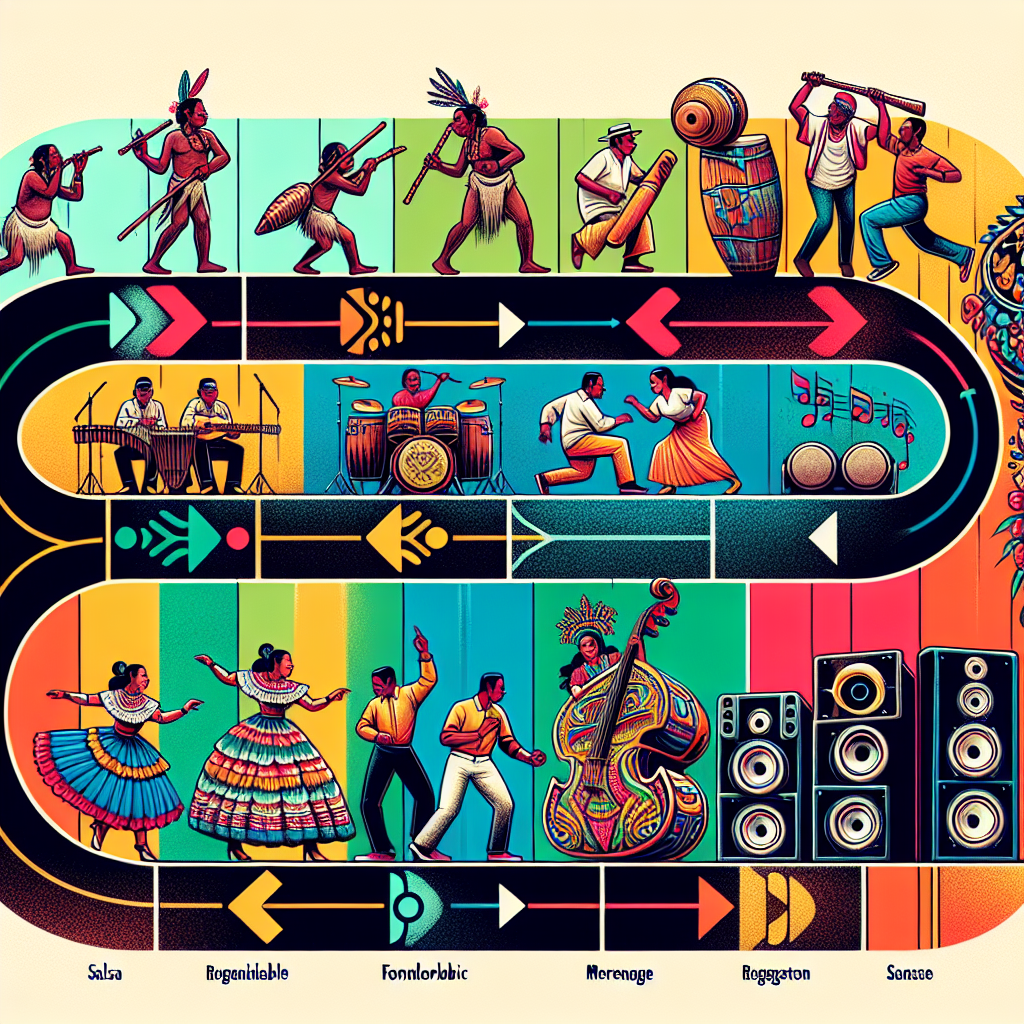Introduction
Latin music has been an influential force in the world for centuries, tracing its origins back to the indigenous music of the Pre-Colombian tribes. Over time, different cultures including African, Spanish, and Portuguese have influenced and enriched its rhythm, melody, and instruments. This article aims to explore the evolution and the cultural significance of Latin music through the ages.
Early Beginnings
Latin music’s roots can be traced back to indigenous music of the Pre-Columbian tribes who inhabited South and Central America. These early forms of music essentially used percussion instruments, traditionally made from raw materials, like turtle shells and hollowed tree trunks. Rituals and religious functions often featured this music, portraying stories and myths of their ancestors.
European Influence
With the arrival of the Spaniards and Portuguese in the 15th and 16th centuries respectively, Latin music was greatly influenced by their culture and instruments. This marked the fusion of native melodies and rhythms with European harmony and composition, introducing instruments like the guitar and the Spanish harp. The Cancionero Musical de Palacio and Cancionero de Segovia are some of the prevalent collections attesting to this transitional era.
African Influence
A significant milestone in the evolution of Latin music was the infusion of African rhythms and beats. African slaves brought over by the Spanish and Portuguese introduced new percussion instruments like bongos and congas and created genres like salsa and rumba, adding a more dynamic layer to the already diverse Latin music culture.
Modern Latin Music
In the 20th century, Latin music saw an explosion in diversity and popularity, producing genres such as salsa, merengue, bachata, reggae, and more. Great musicians like Tito Puente, Celia Cruz and Carlos Santana brought Latin music to an international stage, influencing both non-Latin and Latin artists all over the world. More recently, artists like Shakira, Daddy Yankee, and J Balvin have continued to revolutionize Latin music, making it a staple on global charts.
Conclusion
The evolution of Latin music is a testament to its resilience and its power to adapt and absorb different cultural influences. From its indigenous roots to its modern, electrifying rhythms, Latin music has remained a dynamic, influential force in the world’s music scene. Its journey through the ages is not just a story of rhythm and melodies but it also reflects the journey of the people who created it, their history and culture, their struggles, and triumphs.
FAQs
-
What are some of the key genres in Latin music?
Key genres include salsa, merengue, bachata, reggaeton, mariachi, and bossa nova, among others.
-
Who are some key figures in Latin music?
Notable figures include Tito Puente, Celia Cruz, Carlos Santana, Gloria Estefan, Marc Anthony, and more recently, Daddy Yankee, Shakira, and J Balvin.
-
What are the main instruments used in Latin music?
Some traditional instruments include congas, bongos, maracas, and claves. Modern Latin music also incorporates guitars, pianos, and other western instruments.
-
How has Latin music influenced the global music scene?
Latin music has significantly influenced pop, jazz, hip-hop and various other genres of the global music. It has brought forth fresh rhythms, melodies, instruments and has spurred collaborations with non-Latin artists.
-
What is the significance of Latin music?
The significance of Latin music extends beyond art. It tells the story of Latinx people, their culture, history, and experiences. It serves as a tool to provoke social change, a form of protest, and a testament to the resilience of the Latinx community.




